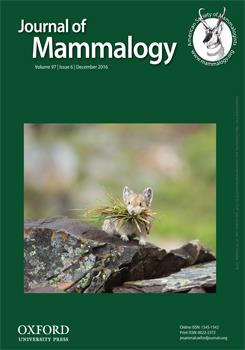Several lineages of small mammals frequently preyed upon by snakes have evolved snake-specific signals and displays that they use in an attempt to deter predation. Although detailed studies have been conducted on the form and function of these behaviors in a few key species, limited work has been done that directly compares behaviors between species, and none that we know of between species of separate lineages. Representative species displaying these behaviors exhibit broad overlap in geographic range, and they often occur in sympatry with each other, where they are preyed upon by the same local guild of snakes. Thus, there is potential for these independently evolved signals to exhibit some degree of convergence in sympatry, reinforcing each other in a fashion similar to what has been documented for aposematic mimicry complexes. Here, we provide the 1st direct quantitative comparison of anti-snake signaling behavior in sympatric small mammals from separate lineages: Dipodomys deserti (Heteromyidae) and Xerospermophilus tereticaudus (Sciuridae). Although some aspects of the displays of squirrels and kangaroo rats were similar (e.g., use of foot drumming, time spent investigating snake), others were not (e.g., willingness to approach closely, tail flagging, sand kicking, jump back displays). Although further research will be necessary to test directly the possibility of convergence, the forms of the signals are disparate enough that it is unlikely that the displays represent an example of convergent mimicry. Our results highlight the potential for further comparative work regarding the evolution of form and function of anti-snake signaling in small mammals.
How to translate text using browser tools
30 August 2016
Comparison of anti-snake displays in the sympatric desert rodents Xerospermophilus tereticaudus (round-tailed ground squirrels) and Dipodomys deserti (desert kangaroo rats)
Rulon W. Clark,
Scott W. Dorr,
Malachi D. Whitford,
Grace A. Freymiller,
Steven R. Hein
ACCESS THE FULL ARTICLE

Journal of Mammalogy
Vol. 97 • No. 6
November 2016
Vol. 97 • No. 6
November 2016
Animal communication
antipredator signals
behavioral ecology
desert rodents
Dipodomys
predator-prey interactions
snake predation




